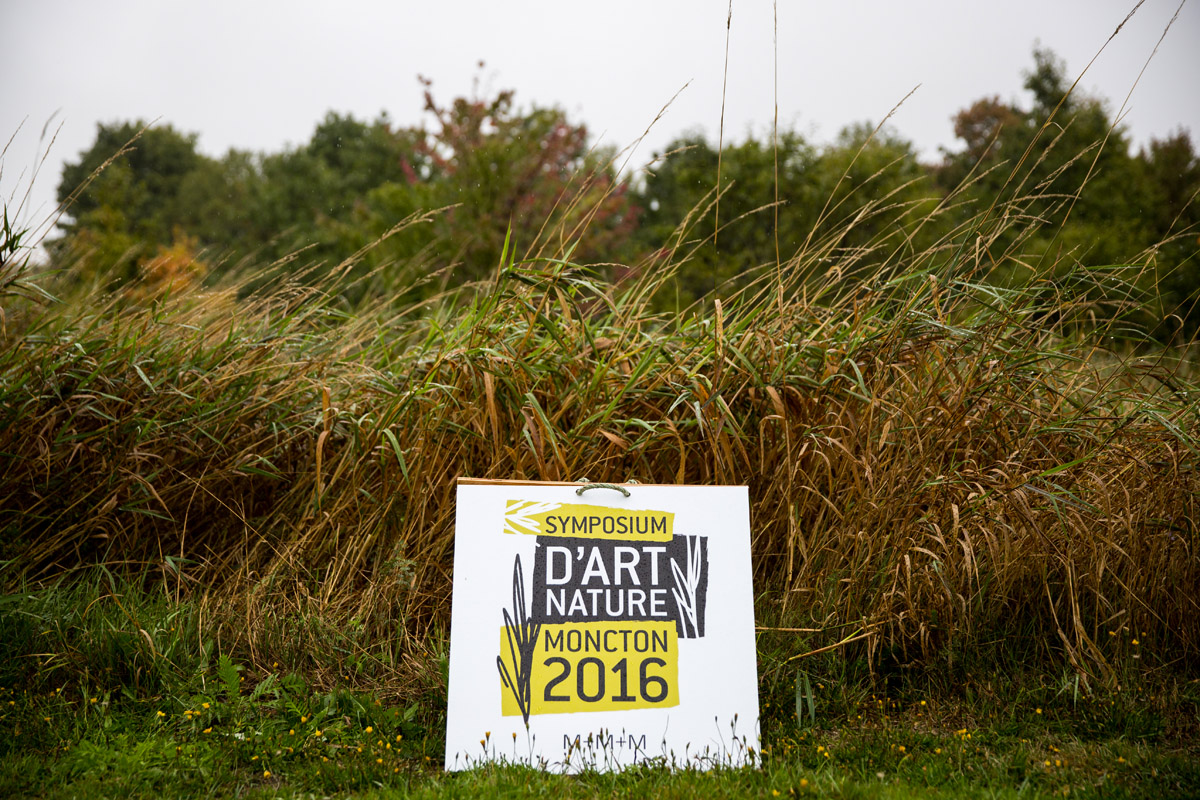History
Before the University of Moncton
Once a farm owned by the Humphrey family, the land that would become the University of Moncton was acquired in 1953 by the Pères Ste-Croix, to extend the Collège St-Joseph of Memramcook. It was in 1963 that the University of Moncton was founded. [1]
"Tree festivals" and botanical projects
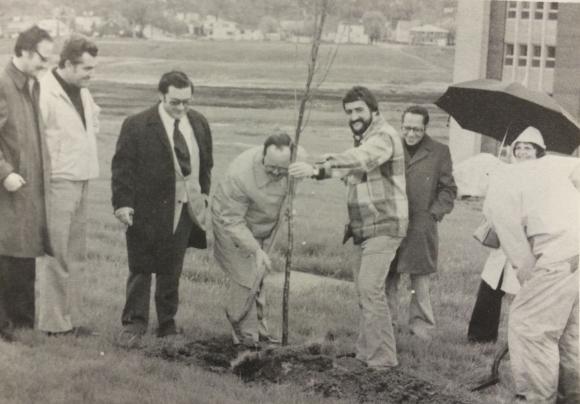
The land east of the Lafrance dormitory where the Millennium Ecological Park is located has inspired several landscaping projects by the university’s alumni, l'Association des Anciens de l'Université de Moncton (AAUM).
The association’s embellishment branch has planted many trees on the site during the years, and has even planned an arboretum to plant exotic trees and flowers [2].
In 1974, the first Fête des arbres (Tree Festival) was organized as an initiative to plant trees around the campus. To the right, we see rector Adélard Savoie planting a tree accompanied by several members of the AAUM, on the present site of the Millenium Ecological Park on May 25 1974.[3]
Fête des arbres stopped after a few years, and the arboretum project went no further.
[1] Cormier, Clément (1975) Université de Moncton: Historique. Centre d'études acadiennes : Moncton, N.-B.
[2] AAUM (oct. 1975) Jardin Botanique sur le campus. Bulletin des Anciens - Université de Moncton, p. 7, no. 43.
[3] AAUM (oct. 1974) Fête des arbres. Bulletin des Anciens - Université de Moncton, p. 9, no. 36.
2000 - Parc écologique du Millénaire
It is only in 2000, 37 years after the University of Moncton’s foundation, that a project took form in this empty lot surrounded by the Hillside and Clément-Cormier streets.
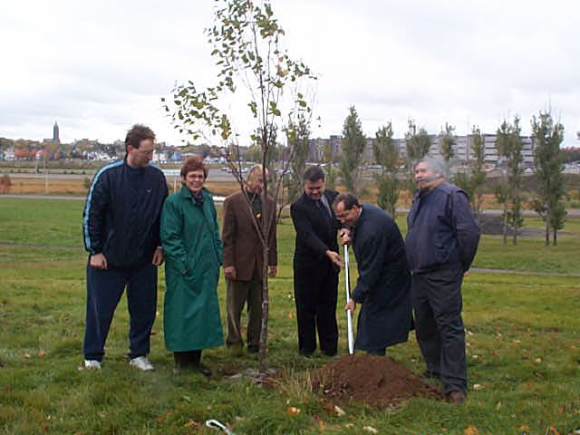
At the dawn of the new millennium, director of sociology department Ronald Babin founded the Millennium Ecological Park in partnership with the University of Moncton and 18 partners. October 11, 2000, a ceremony marked the start of planning works in the Park. Ronald Babin, University rector Yvon Fontaine and the donators planted the first of 600 trees designated for the lot’s landscaping.
During a press conference, the Park’s map was also revealed.
Initial vision
Since the beginning, the project aspired to communicate the importance of the environment’s preservation to the Greater Moncton community. By ceasing to mow the lawn and by sowing indigenous plants, the ecosystem would come back to where it was before its original clearing.
Part of the popular trend of ecological parks in the early 00’s, this project aimed to further environmental involvement and to raise ecological awareness in the academic, entrepreneurial and resident community to ecological issues of the 21st century.
The ecosystem’s restoration would also bring back its ecological functions, such as the restoration of an indigenous vegetation to harbour local flora and fauna, runoff water retention and filtration, and the revitalization of a natural spring.
Bordering the park, a complementary project called « Center of habitation and environmental technology » was proposed at the time of opening, aiming to develop research and demonstration for building better ecological habitations. With its special architecture, this pavilion would serve to educate the community on viable human development. The project has not yet been able to acquire the necessary funds for its construction.
Here is the map of the Millennium Ecological Park that was presented during the opening ceremony, showing a long-term vision of the Park.
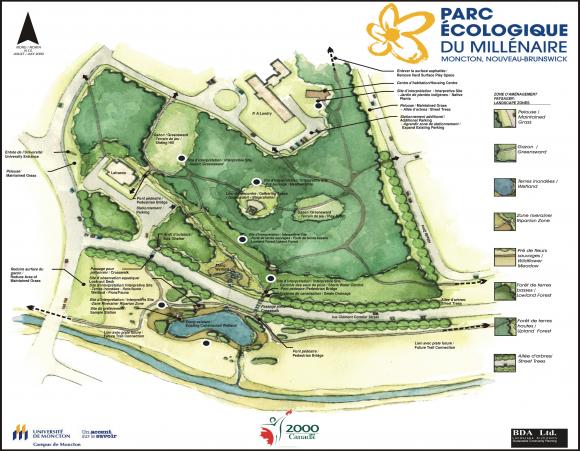
Environmental art
In 2002, sculpture professor André Lapointe joined the Park’s board, bringing artistic vision to the project. Since then, nature art began to be introduced to the growing park, to create an « open-sky art museum » and to better raise awareness of ecological issues to the community by means of visual arts.
Environmental art is an artistic current that holds its roots from the 1970’s, where artists began to protest the ever-growing gap between art and nature. This movement, using mostly in situ materials found on-site, aims to re-link humanity with nature, a bond that fades as time passes.
The first artist invited to the Millennium Ecological Park was Nils-Udo, a German pioneer of environmental art, who exposed works in several countries around the world.
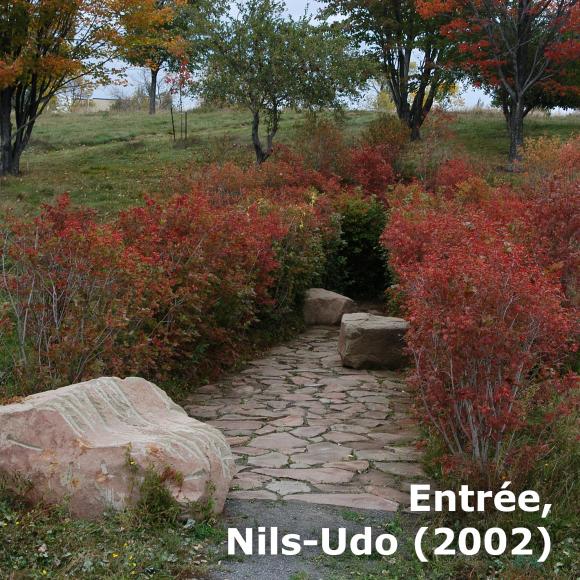
2004 Symposium
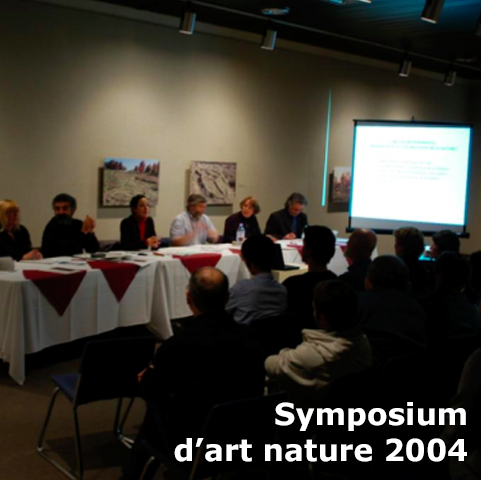
The Millenium Ecological Park wished to not only host permanent works of art, but also to be a creative workshop where artists could express themselves with materials from the surroundings, to create ephemereal pieces.
A continuation of the 1999 Symposium d’art actuel along the Petitcodiac River that helped create a link between art and nature, the second edition took place in the Millennium Ecological Park. Nine artists were invited to create works of art in the Park. Among those invited, Francine Larivée from Quebec created « Absorption », a permanent and growing work of art.
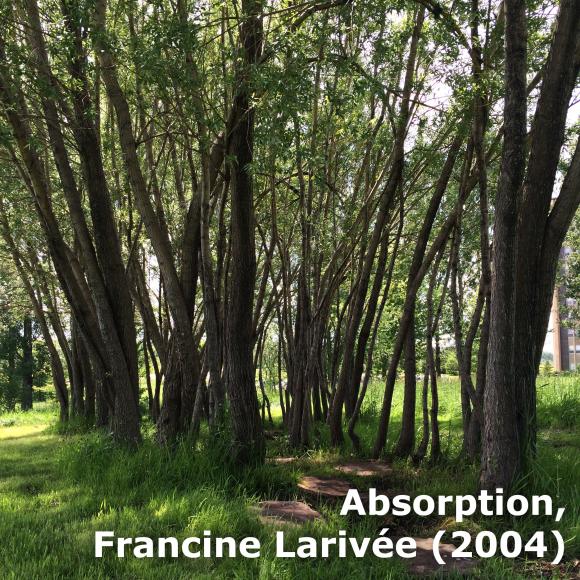
2012 Symposium
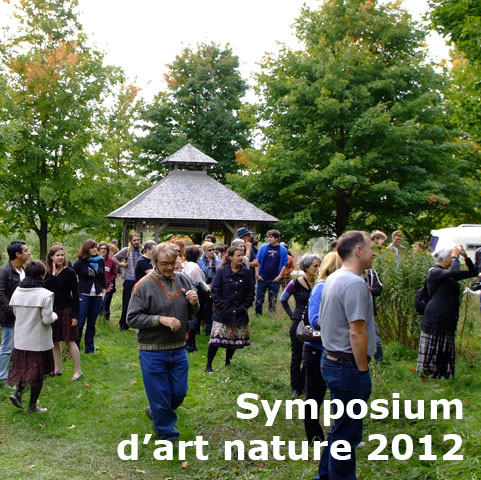
The Millennium Ecological Park’s second symposium took place in 2012, under the theme of energy. Ten artists created ephemereal and permanent works of art, accompanied by a series of conferences to provoke thoughts among experts and the public on the use of energy in today’s society.
Three works of art created in the 2012 Symposium are still here today :
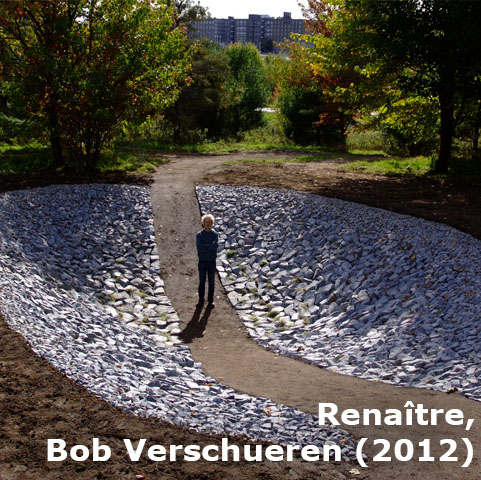
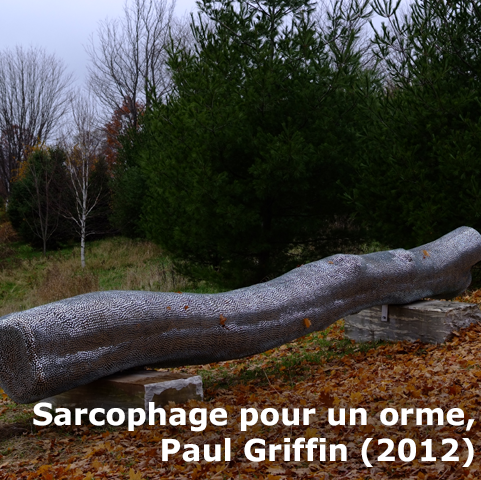
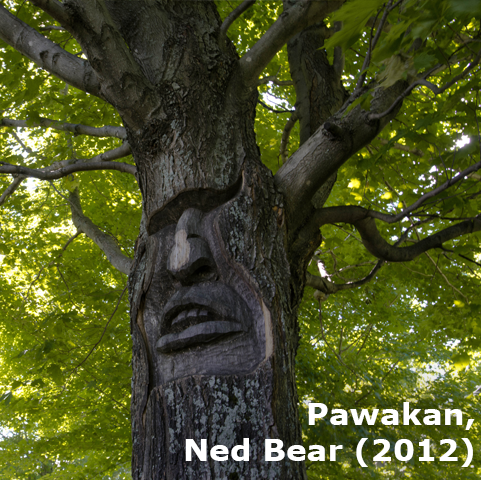
Today
The Ecological Park, now vibrant with long grasses, wildflowers and fledgling trees, hosts five permanent works of art and a gazebo, offering a quiet space on the university campus to admire art and nature. Guided tours are offered during the summer season, starting at the Galerie d’art Louise-et-Reuben-Cohen of the University of Moncton.
Restoration work is undergoing, especially for Nils-Udo’s work « Entrée », which has suffered heavy damage during the last winters. New Viburnum trilobum bushes (Cranberry bush) were offered by the local business MacArthur’s Nurseries, proud partner of the Millennium Ecological Park since its foundation.
2016 Symposium
In 2016, the Millennium Ecological Park hosted its third environmental art event, Symposium d’art/nature : Moncton 2016. The organizing commitee called towards artists having an in situ artistic approach to present their portfolio for the event.
Gallery
Warning: The content of this web site is copyrighted. Any reproduction is strictly forbidden.







